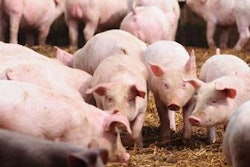As the intensive animal production industry has mostly shifted to confinement facilities, access to soil (minerals) and vegetation (vitamins) has been eliminated as a source of nutrients. Thus, to cover needs of micro-nutrients, commercial premixes of vitamins and trace minerals (usually added at 1 to 3 kg/MT) are used in every diet formulated today for pigs and poultry.
Although academic research, decades ago, has identified requirements for all vitamins and trace minerals for most farm animals, commercial practice has created a plethora of dietary specification sets. In fact, most vitamin manufacturers have their own recommendations, based on their experiences, followed by quite similar recommendations from premix manufacturers and quite variable values developed by consulting institutions and practicing nutritionists. In order to distinguish what each organization is offering as minimum, ideal, or optimal levels, we need to clarify the following:
Actual requirements for production alone
Recent research on accurate requirements is very scare and controversial. Older data that provide more accurate information were established with animals fed and raised under sound health and management experimental conditions. Therefore, requirements published from bodies like the National Research Council (NRC) in the U.S. or the Agricultural Research Council (ARC) in the UK are mainly of academic interest since they basically indicate the minimal addition levels needed to prevent deficiency symptoms rather than to support maximal performance in modern genotypes raised under sub-optimal commercial conditions. Nevertheless, these values are great in that they provide a minimum, a floor, for establishing more practical sets of recommendations.
Recommendations by industry expert bodies
Recommendations are those suggested by independent experts that take into account the needs of modern genotypes and commercial facilities used in raising pigs and poultry today. Naturally, these levels are higher than minimal requirements, but surprisingly not much. Any increases beyond requirements are to add a safety margin to counteract variation in genetics and performance; health; availability and absorption of compounds used in the premixes; and losses during mixing, handling and storage of diets and premixes.
Optimal allowances by commercial partners
Vitamin suppliers, genetic houses, premix manufacturers and practicing veterinarians often develop custom-specific allowances for vitamin and trace mineral premixes. The levels used are almost invariably very high because these parties want to ensure these nutrients will never be wanting in animal diets falling under their account. Quite often, these levels are justified, but over-supplementation can lead to excessive cost. Although premixes account for only a small fraction of production cost, when times are difficult, even the slightest saving can make a difference, especially in low-margin production systems, such as broiler production.
Both practices work adequately and both have their pros and cons. The former is less cost-effective but simpler to formulate and blend, while the latter avoids overloading for both the animal and the environment, but needs careful monitoring.














